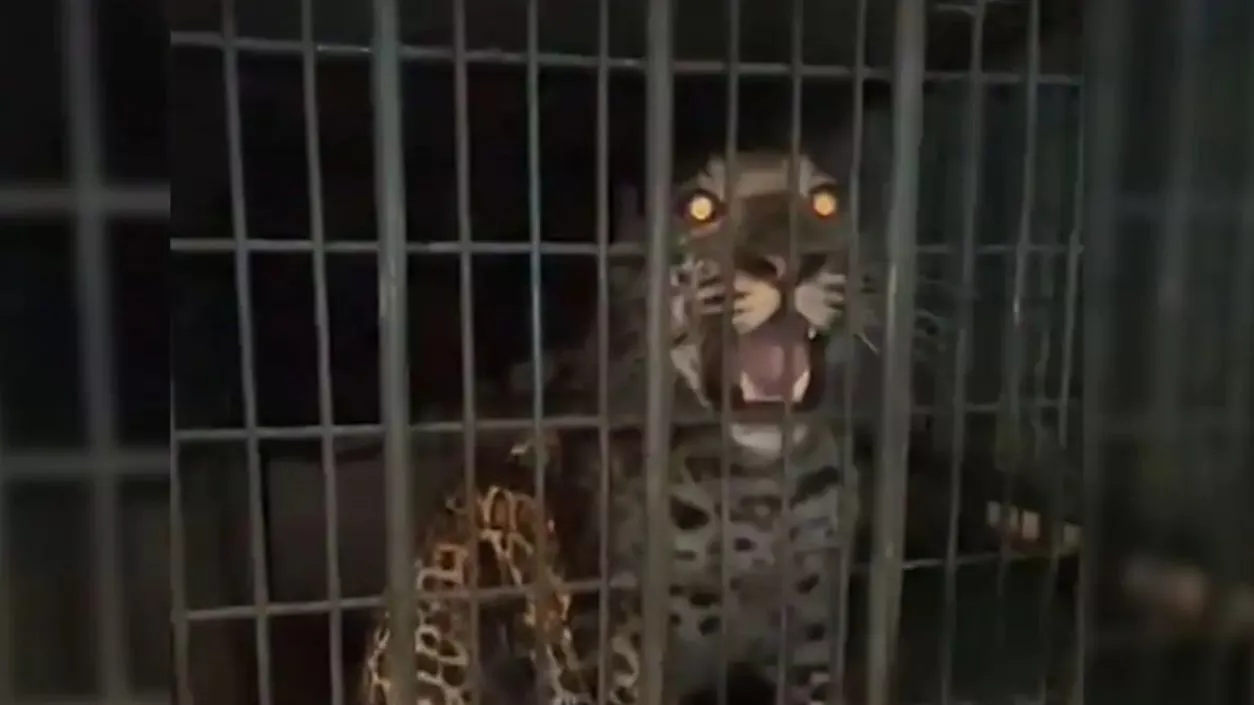Protests erupt outside Kasba Police station as 3 arrested in alleged Kolkata college gang rape
.gif)
.gif)

A five to six-year-old male leopard was rescued after entering the Amol Ashiana Society in Sohna, Haryana, in the early hours of Sunday. The leopard was first spotted by local residents in the basement parking lot of the residential complex around midnight. They immediately alerted security personnel, who then informed local police and the wildlife department.
Wildlife officer R K Jangra confirmed that the leopard likely entered the society through the basement parking area in search of food or to escape territorial conflicts with other leopards. The animal made its way to the society’s sewage treatment plant, where it sought shelter. The authorities responded promptly and began efforts to safely remove the animal without harm to the residents or the leopard. Initially, the rescue team attempted to coax the leopard out by making loud noises, but the animal did not emerge.
Subsequently, the team decided to cut the grill of the sewage treatment plant and set up a cage to trap the leopard. Despite these efforts, the leopard remained inside the plant. The team then resorted to spraying water inside the sewage plant to encourage the leopard to move toward the cage. This method succeeded in luring the leopard out, and the animal was safely captured using a net. The wildlife officials checked the leopard for injuries or signs of illness using a camera, and after confirming that the animal was in good health, they prepared for its release.
The leopard was then safely transported to the Aravalis, located approximately 25 kilometers from the society, where it was released into its natural habitat. The entire operation was completed without injury to the animal, the residents, or the wildlife personnel. The rapid urbanization of areas near the Aravalis, such as Sohna, has led to an increase in human-wildlife conflicts. Similar incidents of leopards straying into residential areas have been reported in other parts of Haryana, including Faridabad and Gurgaon, as the natural habitats of these big cats become increasingly fragmented due to development.
Authorities continue to monitor such situations and are working to ensure the safety of both wildlife and the public. In addition to the rescue operation, wildlife experts emphasize the importance of proper waste management and the need for humans and wildlife to co-exist as urbanization continues to expand into previously natural areas. The authorities are urging residents to stay vigilant, especially in areas close to wildlife habitats, to prevent such incidents from escalating into potential threats to public safety.